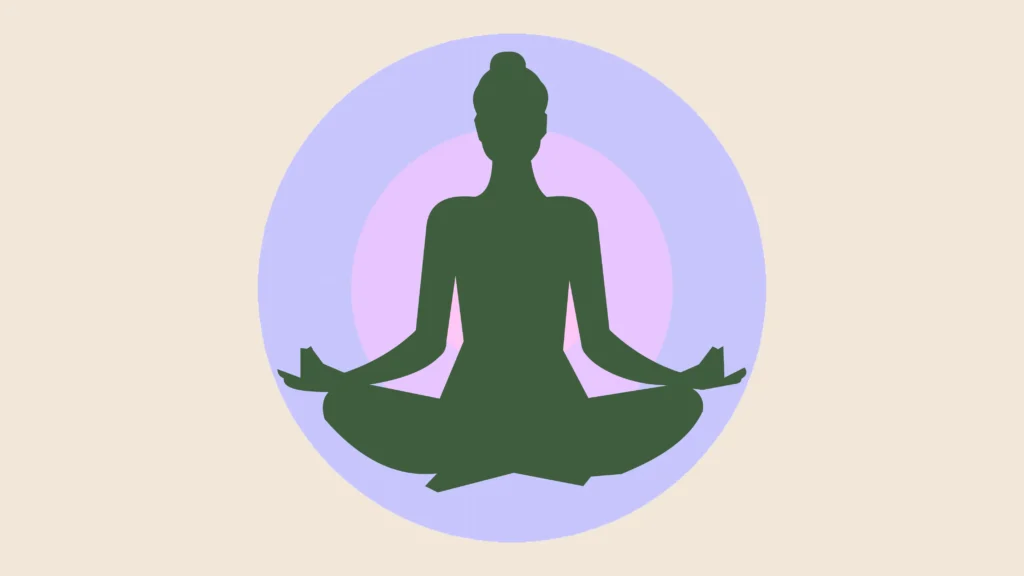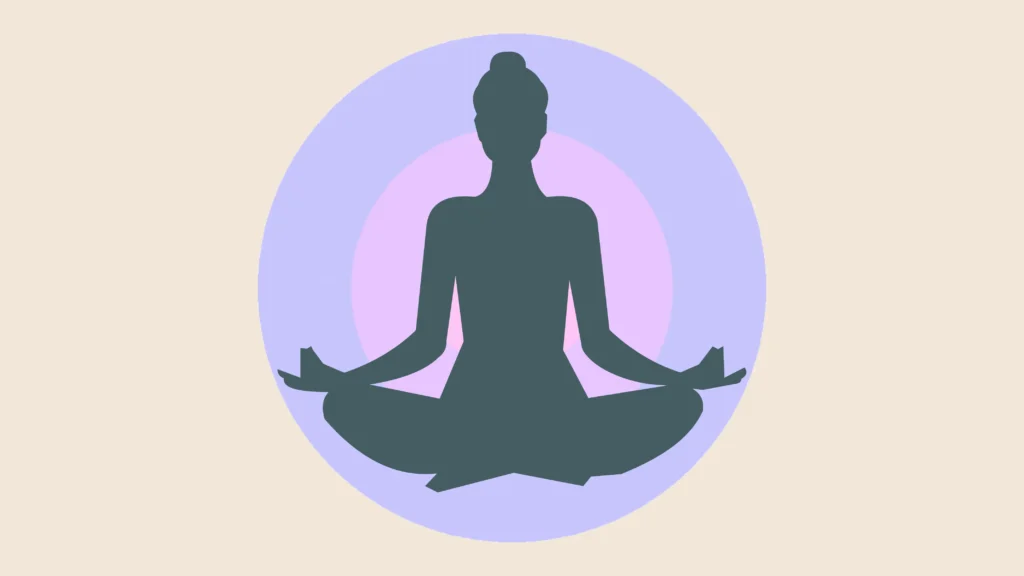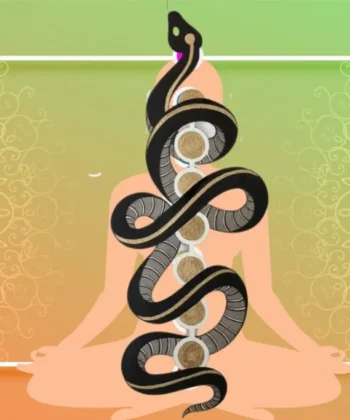
Table of Contents
Why do we feel focused and concentrated one day and then restless or tired the next? Yoga philosophy believes that it is not just a state of mind, but a dance of 3 gunas: rajas (passion), tamas (inertia), and sattva (harmony).
These ancient energies are not just principles; they are qualities that shape our minds, emotions, dietary choices, and even our spiritual path. The Bhagavad Gita, a Hindu scripture, describes how these forces come from prakriti (the illusion of nature) and prevent us from discovering the Purusha, our true self.
Everything changed when I started understanding my Sattva, Rajas, and Tamas personality patterns and how they relate to the 3 Doshas. Balancing the gunas enabled me to minimize stress, make better decisions, and connect with my inner reality.
In this guide, you’ll learn about the 3 Gunas, their qualities, and how to balance them, as well as lifestyle and food advice for purifying these strong energies.
What are the 3 Gunas?
When I first heard the term Guna, I was puzzled—how can just 3 Gunas explain everything about our thoughts, behavior, and even the environment around us? However, in Samkhya and Yoga philosophy, the 3 Gunas do exactly that.
Guna means “quality” or “characteristic” in Sanskrit. The 3 gunas—sattva (purity and harmony), rajas (passion and movement), and tamas (inertia and darkness)—form the foundation of prakriti (nature). These three forces influence everything in existence, from the food we eat to our thoughts.
Gunas are considered particularly powerful because they exist not only in the external world but also within us. Sattva, Rajas, and Tama interact to determine our mood, energy level, motivation, clarity, and even spiritual advancement.
And here’s the interesting thing: they are never static. The gunas are always in motion. We can feel calm (sattvic), overwhelmed (rajasic), and then tired or foggy (tamasic). This constant dance is a part of life, and with awareness, we can learn to control it.
Understanding how Gunas affect the mind and body is similar to having your own energy map. When I began to identify which Gunas were active inside me, I was able to make intentional decisions to achieve more balance, awareness, and inner peace.
Sattva—The Guna of Purity and Harmony

When I first learned about sattva, I felt like I had found the missing piece in my search for peace. Sattva is the quality that represents clarity, wisdom, bliss, and balance. It symbolizes light, truth, and peaceful awareness—qualities we must develop if we want to achieve inner peace and spiritual progress.
The Sattvic mind is calm but aware, compassionate without being pushy, and joyful without needing constant stimulation. If you find great satisfaction in a quiet, restrained life and are drawn to compassion and truth, you are most likely in a Sattvic state.
Signs of a Sattvic Lifestyle:
- A calm, steady mind
- Emotional resilience
- Love for truth, simplicity, and mindfulness
- Compassionate actions and non-violence (Ahimsa)
- Deep connection with nature and spiritual practices
How to Increase Sattva:
What is the good news? Sattva can be cultivated. Sattvic food, practices, and thoughts can help us gradually shift our energy toward greater balance and awareness.
Sattvic Foods: Sattvic foods include fresh fruits and vegetables, whole grains, nuts and seeds, herbal teas, ghee, and dairy products (when consumed mindfully). These foods are light, nutritious, and energizing but not too stimulating.
Sattvic Habits: Waking up early, practicing yoga and meditation, spending time in nature, and reading good, uplifting material all contribute to the strength of the Sattva guna.
Sattvic Thoughts: A satvik mind is reflected in humility, honesty, forgiveness, patience, and gratitude.
Why Sattva Matters:
According to the Bhagavad Gita, sattva also binds the soul, though it is the state most similar to pure consciousness. It gives us the clarity to see beyond maya (illusion) and get closer to the purusha, or our true self. This is why the practice of sattva is considered essential for spiritual advancement—it is the steady path to enlightenment.
Rajas—The Guna of Activity and Desire

If sattva represents still water, rajas represents a fast-flowing river. It is the quality of motivation, ambition, desire, and constant movement. Rajas comes into play whenever I’m balancing a busy schedule, pursuing goals, or feeling a strong desire to achieve more.
Rajas is what drives us to act. It increases our motivation, enables us to set goals, and helps us get things done. Without it, there can be no progress. But the problem with this is that when Rajas Guna predominates, it can give rise to restlessness, anxiety, attachment, and ultimately jealousy.
What Rajas Looks Like in My Life:
- Back-to-back tasks that leave me breathless
- Scrolling aimlessly even though I’m tired
- Feeling like I need to be productive to be worthy
- Craving success, but not really sure what it even means
Examples of a Rajasic Lifestyle:
Working at a fast pace with deadlines, strenuous exercise, frequent travel, spending excessive time on the computer, or even eating spicy, salty, or highly processed foods can contribute to an increase in rajoguna. Even constant goal setting and comparison can trap us in the rajasic cycle.
Ever been there?
Some days, I swear I don’t even pause to breathe. I just move from one thing to the next like a machine. It’s weird — I used to see that as discipline. Now I think it’s just… too much fire.
The Weird Part?
Rajas isn’t bad. I mean, ambition and movement are awesome. But when I live in that mode 24/7, I end up snapping at people, skipping meals, or lying awake at 2AM wondering why I can’t shut my brain off.
So What Now?
I’ve started doing this thing where I check in with myself:
“Am I being led by fire or by calm?”
And sometimes, the answer’s obvious. My mind’s racing, my to-do list is a mess, I haven’t had a proper meal — yeah, that’s rajas.
On those days, I try to slow down — not with a 10-step routine or anything fancy. Just by noticing. By breathing. By choosing one thing to do slower.
Tamas—The Guna of Inertia and Inner Fog

Some mornings, I don’t want to move. Not out of tiredness exactly… more like everything feels heavy. Like I’m wading through emotional quicksand. I’m not sad, I’m not angry — I’m just… off. That’s tamas.
Tamas is that thick, dull energy that pulls us inward and down. It’s the force behind “I’ll do it tomorrow,” behind binge-watching for hours, behind sleeping through alarms and still feeling tired.
You Know You’re in Tamas When:
- You hit snooze 5 times but still don’t feel rested.
- You keep putting things off — even the things you want to do.
- You scroll for hours and still feel numb.
- You avoid people, decisions, effort.
- And when your thoughts come? They’re often foggy, heavy, or quietly self-defeating.
What Feeds That Fog?
I’ve noticed tamas creeping in when I overeat comfort food, skip movement, surround myself with clutter, or stay in a toxic loop — be it on my phone, in my thoughts, or in relationships. Even emotions like guilt or fear, when left to stew too long, can deepen tamas.
Here’s the Thing — Tamas Isn’t the Enemy
For the longest time, I thought feeling this way meant something was wrong with me. But now I get it: tamas isn’t bad. It’s just stuck. And it needs a gentle nudge, not a shove.
What Helps Me Shift It:
- Opening a window and letting in light.
- Eating something fresh, not fried.
- Taking a short walk or stretching, even for a couple of minutes, helps me break that fog.
- Sometimes I just sit quietly — not to fix anything, but to let my thoughts settle, like dust in sunlight.
- Cleaning one corner of my space — just one.
How the Gunas Flow Through My Day (and Maybe Yours Too)
One of the wildest things I’ve learned through yoga — and life, honestly — is that these three energies (the gunas) don’t just “exist” in you. They shift. Constantly.
Minute to minute, meal to meal, mood to mood.
Like in the morning? I usually wake up feeling grounded and clear — my thoughts are soft, my breath feels deeper. That’s Sattva in action. It’s like clarity wrapped in stillness.
Then I sit down to work, and boom — Rajas takes over. I’m making lists, ticking off tasks, fueled by deadlines and to-dos. There’s drive, there’s fire, and it feels good… until it doesn’t.
By the time evening rolls around — especially if I’ve been scrolling too much or had a heavy dinner — I feel heavy, distracted, even a little foggy. That’s Tamas creeping in. Not bad, just my body saying, “Slow down. Time to unplug.”
What surprised me most?
I used to think these were personality traits. Like, “I’m just a restless person” or “Why can’t I focus?”
But now I see them for what they are — energies moving through me. And once I noticed them, I could start to shift them.
Why the Gunas Matter (More Than You Think)
I used to think balance meant doing less. Now I get it — it’s about understanding what kind of energy is running the show.
- Sattva feels like those rare mornings when you wake up calm, clear, and somehow everything flows.
- Rajas is that fire-in-your-belly drive that pushes you to hustle, check things off, make things happen.
- And Tamas? That’s the heavy, slow-down energy — the one that makes your bed feel like the safest place on earth.
Here’s the thing though: too much of any one of them? That’s when things go sideways.
Burnout from nonstop Rajas. Feeling stuck or numb from Tamas. Even getting too floaty in Sattva without grounding.
Yoga, food, breathwork, rest — they’re not just wellness buzzwords.
They’re tools to help us notice what’s off and gently return to center. To Sattva.
Not perfection. Just presence.
When you start tuning into these shifts — when you ask, “What’s leading me today: clarity, fire, or fog?” —
that’s when things start to change.
Not overnight. But deeply.
So What’s the Real Takeaway?
Learning about the three gunas — Sattva, Rajas, and Tamas — totally shifted how I see my own moods, habits, even the way I move through the day. I used to think my emotions just happened. Now, I realize they often follow a pattern… and those patterns have names.
The wild energy that makes me bounce from task to task? That’s probably rajas.
The foggy, heavy slump where everything feels like meh? Yep, tamas.
And those rare, beautiful moments where I feel centered, clear, and still? That’s sattva showing up.
The magic isn’t in “fixing” ourselves — it’s in noticing.
When I started paying attention to which guna was running the show, I could finally respond with more awareness instead of reacting on autopilot.
You don’t need to overhaul your life. Just start by watching:
- How do your mornings feel?
- What kind of energy comes after certain foods, or conversations?
- Do your habits move you toward peace, or away from it?
Little by little, that kind of awareness builds real clarity.
And the more I tune in, the more I feel like I’m not just surviving my day — I’m actually showing up for it.
Also Read: Kriya Yoga Breathing Techniques: 5 Powerful Methods for Inner Peace
Also Read: How to Practice Kundalini Yoga at Home
Also Read: Somatic Yoga for Beginners




